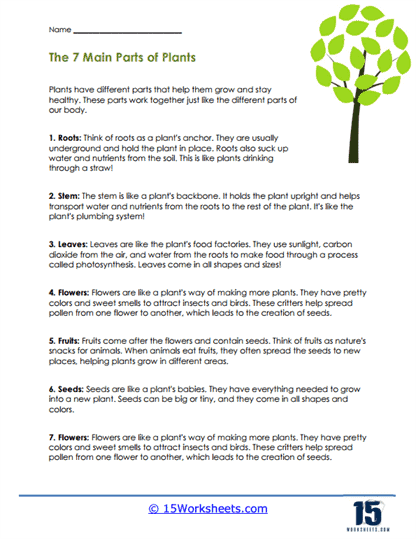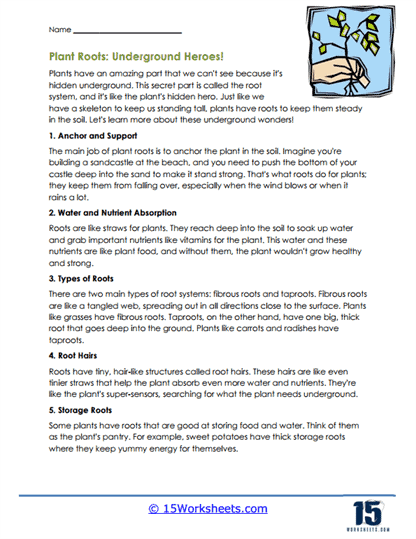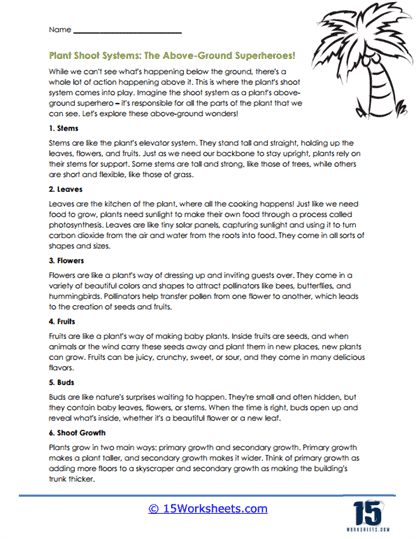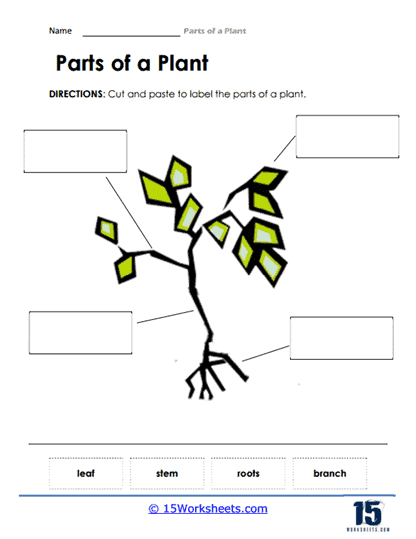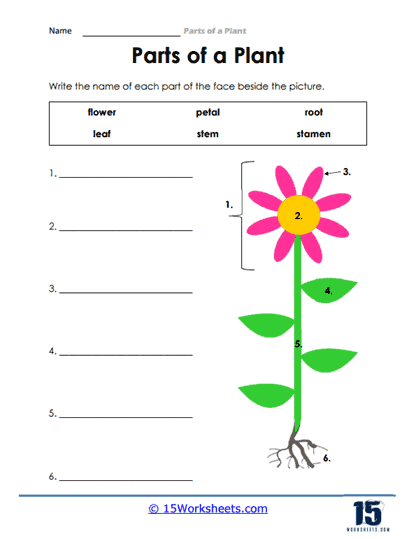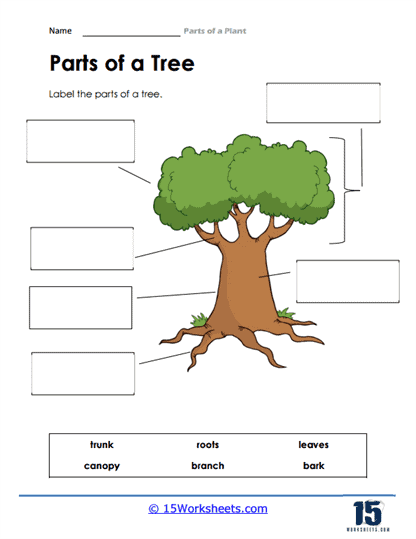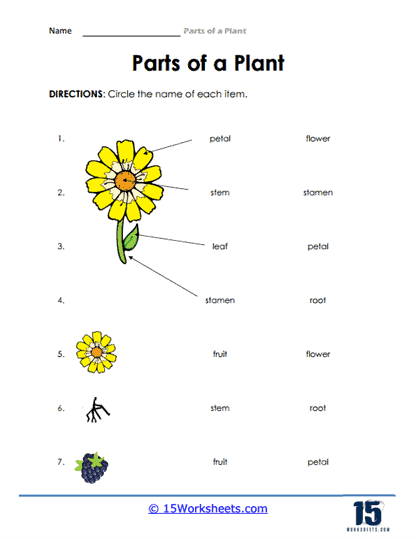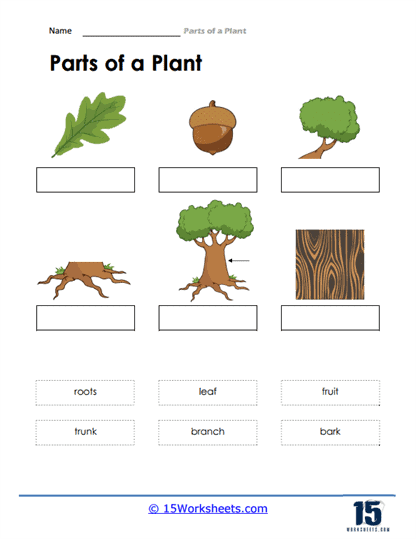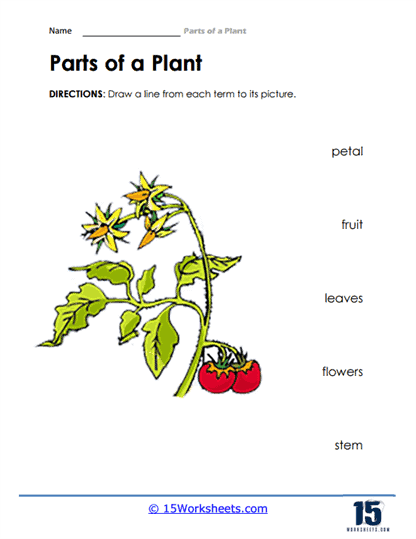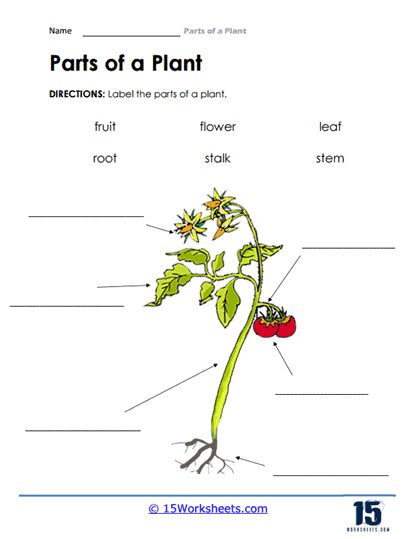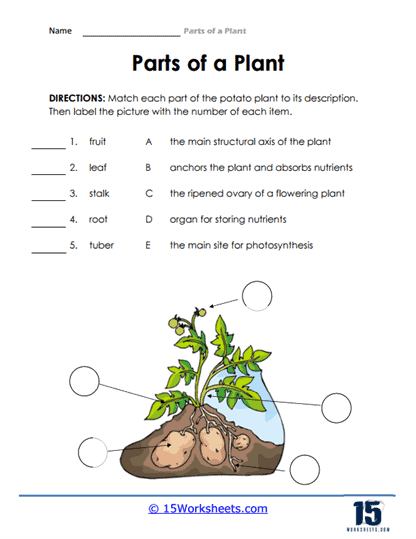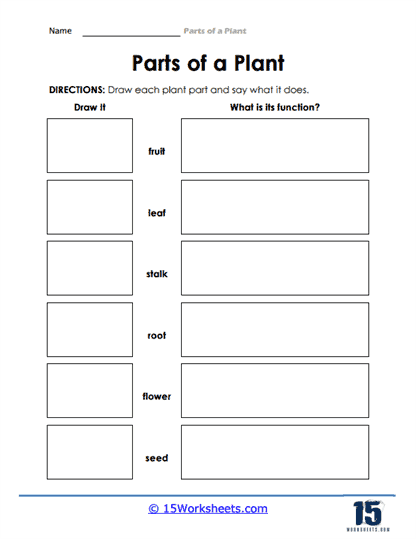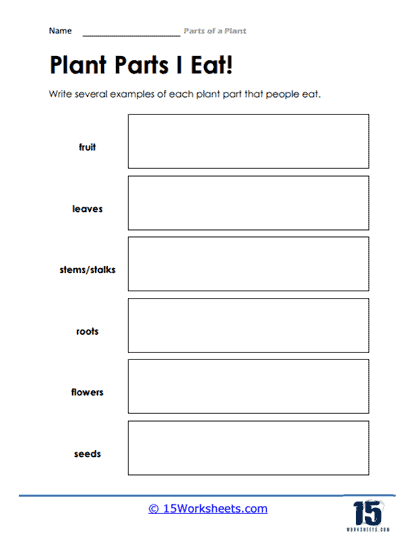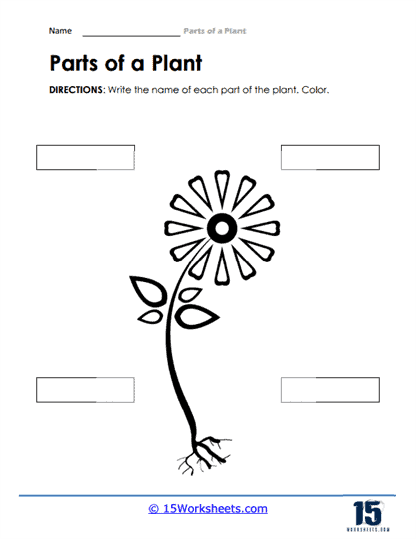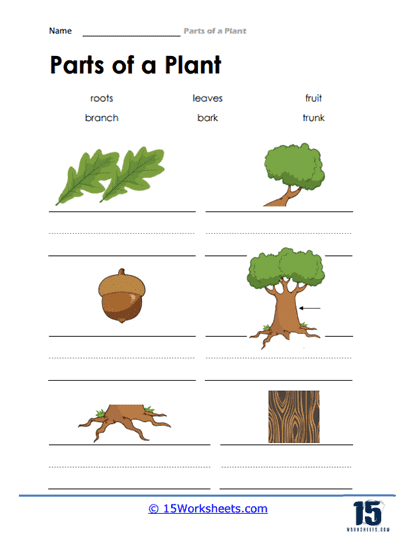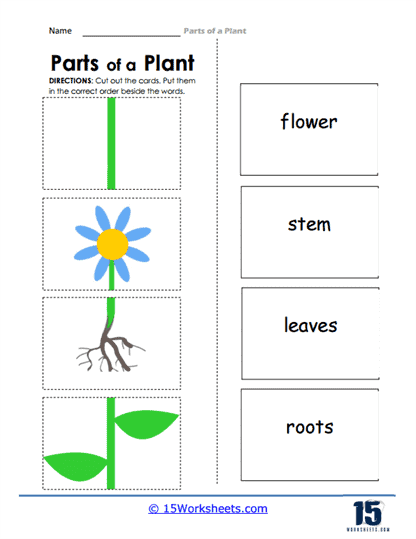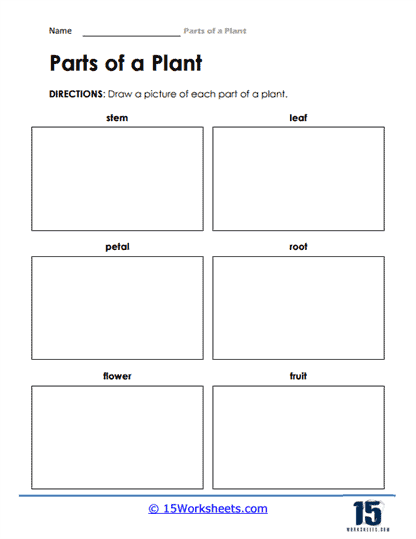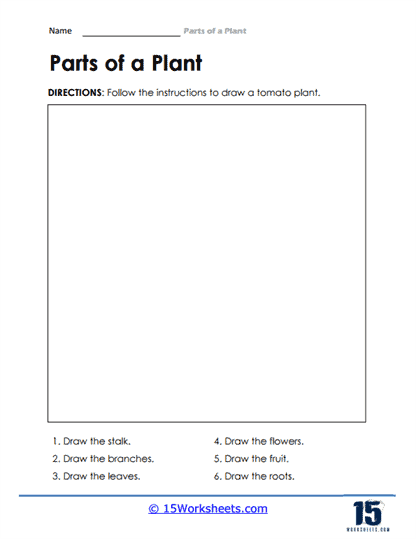Parts of a Plant Worksheets
All About These 15 Worksheets
This comprehensive collection of 15 carefully crafted worksheets is designed to engage and inspire students as they explore the fascinating world of plant anatomy. With a focus on building a strong foundational understanding of the various parts of a plant and their essential functions, these worksheets invite students to embark on an educational journey from the hidden depths of the roots to the vibrant beauty of the leaves, stems, and flowers.
Each worksheet is thoughtfully designed to offer a variety of exercises that cater to different learning styles, ensuring that students not only memorize facts but also develop a deep and lasting comprehension of plant biology. The visual learners will find the diagrams and illustrations particularly helpful, as many worksheets feature detailed images of plants, asking students to label each part-roots, stems, leaves, flowers, and seeds-with precision. These exercises challenge students to identify and distinguish between plant parts, fostering critical thinking and observation skills.
Beyond labeling, the worksheets delve into the specific functions of each part, guiding students through the remarkable roles they play in sustaining plant life. For example, students will learn how roots anchor the plant and absorb essential nutrients from the soil, while stems provide structural support and transport water and nutrients throughout the plant. They’ll explore how leaves act as the plant’s food factory, using sunlight to produce energy through photosynthesis, and discover the intricate role of flowers in reproduction. By associating plant parts with their functions, students not only sharpen their knowledge of science but also develop an appreciation for the complexity and beauty of the natural processes that surround them.
In addition to factual learning, creativity is woven into the fabric of this collection. Several worksheets encourage students to express their newfound understanding by drawing the different parts of a plant, or even constructing a full plant step by step, following a set of guided instructions. These artistic activities allow students to apply what they’ve learned in a hands-on way, reinforcing their knowledge through active participation. Drawing not only reinforces memory but also invites students to think more deeply about the structure of plants and how each part connects to the whole. These creative exercises offer an opportunity for students to personalize their learning experience and feel a sense of accomplishment as they complete each part of the plant with care.
The versatility of these worksheets makes them suitable for a broad range of students, whether they are beginners learning about plants for the first time or more advanced students looking to deepen their knowledge. The exercises are adaptable and can be used in various educational settings, from structured classroom activities to independent homework assignments. Teachers will appreciate the flexibility these worksheets offer, allowing them to integrate plant biology seamlessly into their science curriculum or language arts lessons.
One of the key benefits of engaging with these worksheets is the way they naturally enhance vocabulary and language skills. As students learn the scientific terminology associated with plant parts-such as “photosynthesis,” “chlorophyll,” “stamen,” and “xylem”-they are expanding their lexicon in meaningful ways. The worksheets also encourage the use of descriptive language, asking students to match definitions with the correct plant terms, which helps to reinforce both comprehension and communication skills. This dual focus on science and language makes the worksheets an invaluable tool for educators striving to cultivate well-rounded learners.
By immersing students in the study of plants, they develop a greater appreciation for the environment and the intricate ecosystems that sustain life on Earth. Understanding how plants grow, survive, and contribute to the world around us encourages students to think critically about the importance of conservation and sustainable practices. It fosters a sense of curiosity about nature, inspiring students to look at the world with new eyes and recognize the vital role plants play in supporting all life forms, including our own.
What are the Parts of a Plant?
Plants are multicellular organisms belonging to the kingdom Plantae. They are characterized by their ability to photosynthesize, converting sunlight into energy to support growth and reproduction. The main parts of a typical plant are:
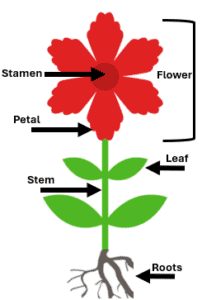
Flower – The flower is the reproductive part of the plant. It is often brightly colored to attract pollinators like bees, butterflies, and birds. Flowers typically contain the reproductive organs, such as the stamen (male) and pistil (female), that facilitate fertilization. Once fertilized, flowers develop into fruits containing seeds, allowing for reproduction and the continuation of the species.
Stamen – The stamen is the male reproductive part of the flower, and it consists of the anther and filament. The anther produces pollen, which contains the male gametes (sperm cells) necessary for fertilization. When pollinators visit the flower, they transfer pollen from the anther to the pistil of another flower, facilitating cross-pollination. This process is crucial for plant diversity and the production of seeds.
Petal – Petals are the colorful, often fragrant parts of the flower that surround the reproductive organs. Their bright colors and attractive scents help to lure pollinators to the flower. Petals also act as a protective layer for the reproductive structures in the early stages of development. Additionally, their size, shape, and color can vary greatly between plant species and are often adapted to specific pollinators.
Leaf – Leaves are responsible for photosynthesis, the process through which plants convert sunlight, carbon dioxide, and water into energy (glucose) and oxygen. The large, flat surface area of leaves allows them to absorb maximum sunlight. Stomata (small pores) on the underside of leaves facilitate gas exchange, letting in carbon dioxide and releasing oxygen. Leaves also help in regulating water through transpiration, which helps in cooling the plant and drawing nutrients up from the roots.
Stem – The stem serves as the main support structure of the plant, connecting the roots to the leaves and flowers. It transports water, minerals, and nutrients from the roots to other parts of the plant through the xylem. The stem also transports the food produced in the leaves (through photosynthesis) to the roots and other non-photosynthetic parts of the plant via the phloem. Additionally, it helps the plant maintain its upright position and grow towards sunlight.
Roots – Roots anchor the plant to the ground and absorb water and minerals from the soil. They play a crucial role in providing the plant with the necessary nutrients for growth and development. Roots also store food (such as starches) produced by the plant in periods of surplus, which can be used later during periods of dormancy or when photosynthesis is not possible. Additionally, roots help stabilize the soil, preventing erosion and maintaining a healthy ecosystem.
Other Plant Parts
Fruits – Fruits are the delicious, colorful products of a plant’s hard work, emerging from the mature ovary after successful fertilization. They come in all shapes and sizes, from juicy apples and tomatoes to crunchy nuts and beans, each uniquely suited to protect the seeds within. Not only do fruits serve as a protective barrier, but they also play a vital role in spreading seeds far and wide, whether by wind, water, or with a little help from animals like birds and humans. With their sweet or savory allure, fruits ensure the next generation of plants can thrive in new and distant places.
Seeds – Seeds are like nature’s tiny treasure chests, each holding the promise of a new plant. Inside every seed lies a miniature plant embryo, along with a reserve of food to kickstart its growth, all snugly wrapped in a tough, protective seed coat. Seeds are true adventurers, traveling by wind, water, or hitching a ride on animals to find the perfect spot to grow. Once they land in a cozy environment with the right conditions, they awaken from their dormancy, sprouting roots and shoots to start life anew as a vibrant plant.
These are the primary parts of a plant, each with its specific function, working together to ensure the plant’s growth, survival, and reproduction.

